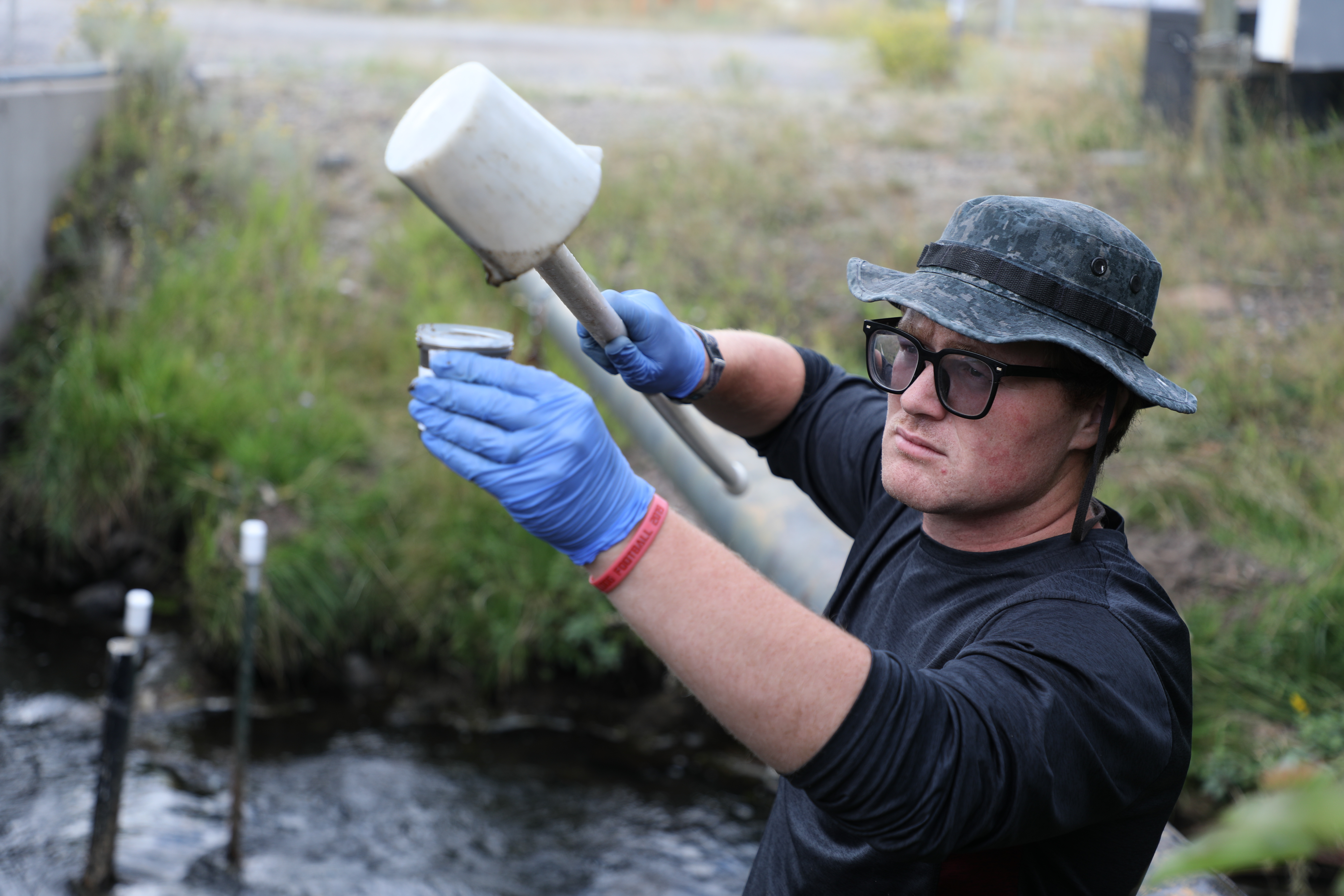Research that makes a difference

The Silver Bow Creek ecosystem is recovering from the effects of nearby mining. Researchers at Montana Tech are focused on extracting the DNA of the microscopic inhabitants of the creek to understand how mining contaminants impact the evolution of microbes. Their findings are not only important to the local community, but also hold potential insight to the legacy of mining on ecosystems worldwide.
The research done by the Laboratory Exploring Geobiochemical Engineering and Natural Dynamics (LEGEND), headed by Dr. Alysia Cox, exemplifies each one of those touchpoints. Since 2015, the LEGEND team has sampled sites along Silver Bow Creek and the Clark Fork River, from Drummond to Thompson Park. The samples can help scientists understand more about how the watershed and the ecological systems that depend on it are recovering after years of environmental remediation work necessitated by a long history of mining in the area.
“Because environmental factors dictate the way that living things interact with necessary nutrients, we can study them across a wide environmental gradient, and can understand how environmental chemistry shapes ecology,” LEGEND Earth Science and Engineering Ph.D. student Paul Helfrich said. “I’m primarily studying microbe–
metal interactions in Silver Bow Creek. Silver Bow Creek is a great place to do that because it is a recovering ecosystem that is healing from the effects of mining contamination. It’s the perfect place to study microbe– metal interactions if you’re interested in restoration and/or low-temperature geochemistry.”
The LEGEND group conducts a modified phenol-chloroform extraction to isolate environmental DNA. The DNA is then sent to the University of Minnesota Genomics Center, where complex molecular biological techniques determine the sequence of bases in local microbial genomes.
“The majority of the work on my part is related to sorting out what that code means,” Helfrich said. “That is what the field of bioinformatics is: you have an enormous dataset of millions of sequences, and you have to use computer-based tools to help you understand what they actually mean.”
Helfrich uses algorithms in a metagenomics tool called KBASE, funded by the Department of Energy, to conduct analyses. He has identified a pattern.
“What is clear is that the microbes in this area are utilizing spatially specific assemblages of resistance genes to deal with copper exposure,” Helfrich said. “Even low copper concentrations play a selective role in the ecosystem.”
Helfrich believes long-term exposure to copper has caused the microbes in the creek to adapt to the metal’s presence.
“In the same way that my genes encode for proteins that cause my hair to be red, microbes have encoded systems that help them deal with stress,” Helfrich said. “So, when they need to photosynthesize, respire, or uptake dissolved inorganic carbon, their genomes encode for proteins that allow those processes to occur. Similarly, they have genes that encode for resistance proteins that allow them to survive environmental stress. When it comes to copper, many of these proteins are part of an efflux system that pumps copper out of the cells so that it can’t harm the microorganisms. There are other mechanisms as well, proteins that transform copper into less reactive states or that pump out magnesium and cobalt to reduce overall oxidative stress. When it comes to resistance profiles, what we’re talking about is not just one gene that helps organisms survive copper exposure. We’re talking about a plethora of genes that work together to resist the effects of stress in the environment.”
A paper on Helfrich’s work has been published in Environmental Microbiology Reports. Helfrich is expected to graduate in Summer 2025.
“I love Butte, and I hope that Silver Bow Creek and the Clark Fork River continue to play a role in my research,” Helfrich said. “They are a massive experiment in ecological restoration, and as a biogeochemist, someone who’s interested in that intersection between the nonliving and the living world and the basal ecological state, this is as good as it gets in terms of a laboratory.”